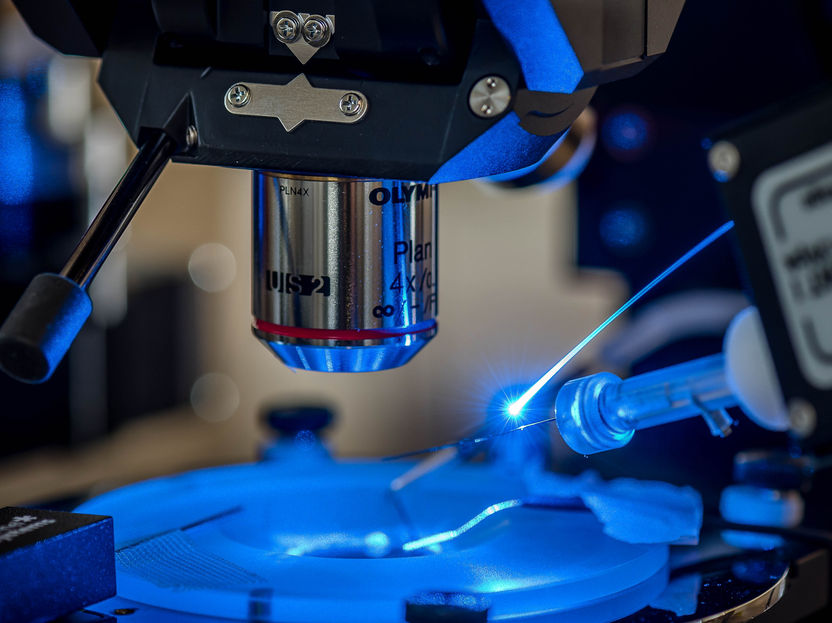A single control center for sleep and wake in the brain
Breakthrough for sleep medicine
Until now, it was thought that multiple brain areas were needed to control sleep and wakefulness. Neuroscientists from Bern have now identified one single control center for the sleep-wake cycle in the brain. The findings are of great importance for finding new sleep therapies.

Using a technique called optogenetics, the thalamic neurons in the brain can be controlled with light pulses. Depending on the type of pulse, activation of thalamic neurons induce either sleep or wakefulness, indicative of a midline thalamus sleep-wake hub.
© Pascal Gugler for Insel Gruppe AG
Every night we spend several hours asleep and every morning we awaken to go about our lives. How brain circuits control this sleep-wake cycle remains a mystery. Our sleep is divided into two phases, non-rapid eye movement (NREM) sleep, and REM (or paradoxical) sleep during which most of our dreaming occurs. Important brain circuits have been identified using both experimental and clinical evidence, yet the precise underlying mechanisms, such as the onset, maintenance and termination of sleep and dreaming, is not well understood.
When we fall asleep, the electroencephalogram (EEG) reveals that our brains generate rhythmic oscillations called "slow waves". These waves are important for keeping us asleep and for recovering after a full day of mental and physical activity. Common hypotheses hold that these slow waves are produced in the cerebral cortex, the upper part of the brain just below the surface of the skull. In contrast, wakefulness was thought to arise from the activity of "wake centers" located in the lower part of the brain including the brainstem that directly activates the neocortex, which is the part of the mammalian brain involved in higher-order brain functions such as sensory perception, cognition and generation of motor commands.
In an important new study, neuroscientists at the Department of BioMedical Research (DBMR) at the University of Bern and the Department of Neurology at Inselspital, Bern University Hospital, found that neurons in the thalamus, a central hub of the brain, control sleep as well as wakefulness. The thalamus is connected to almost all other brain areas and supports important brain functions including attention, sensory perception, cognition and consciousness.
Switching sleep on and off
The researchers headed by Prof. Dr. Antoine Adamantidis discovered that a small population of these thalamic neurons have a dual control over sleep and wakefulness, by generating sleep slow waves but also waking up from sleep, depending on their electrical activity. The research group used a technique called optogenetics, with which they used light pulses to precisely control the activity of thalamic neurons of mice. When they activated thalamic neurons with regular long-lasting stimuli the animals woke up, but if they activated them in a slow rhythmical manner, the mice had a deeper, more restful sleep.
This is the first time that an area of the brain has been found to have both sleep and wake promoting functions. "Interestingly, we were also able to show that suppression of thalamic neuronal activity impaired the recovery from sleep loss, suggesting that these neurons are essential for a restful sleep after extended period of being awake", says Dr. Thomas Gent, lead author of the study. This shows that the thalamus is a key player in both sleep and wake.
Breakthrough for sleep medicine
The findings of this study are particularly important in a modern world, where the active population sleeps about 20 % less than 50 years ago and suffers from chronic sleep disturbances. People frequently work irregular hours and rarely catch up on lost sleep. Poor sleep is increasingly linked to a multitude of psychiatric diseases and weakens the immune system. "We believe that uncovering the control mechanisms of thalamic neurons during sleep and wake will be key to finding new sleep therapies in an increasingly sleep deprived society", says Prof. Antoine Adamantidis.



















































